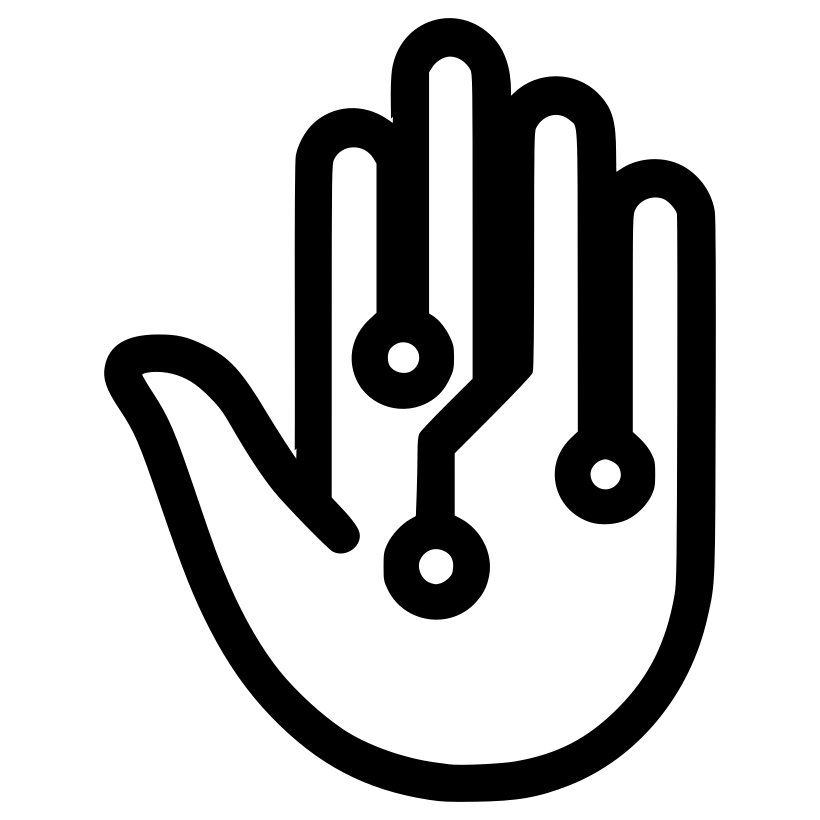From Social Contract to Selective Enforcement: Why Trans Rights Are at Risk

I heard someone complaining about two-tier policing the other day, as if it is a modern phenomenon. They were frustrated at their belief that “the left get away with things the right do not.” But in my own communities, the opposite frustration is just as common. That made me want to put some thoughts down.
What is society? I am not going for a dictionary definition here. For this conversation, it is a contract between people, sometimes explicit and often tacit, about how we are going to behave towards one another. What is the state? A body of power that arises in a society and tries to codify and enforce parts of that contract. And what are the police? One mechanism the state uses to enforce.
A lot of people assume that codification makes something authoritative. Think of the US Constitution: a written set of rules, meant to be final. But this is not the case. You cannot write rules that capture the nuances of every human relationship. Even in constitutional systems you find “conventions” that grow up where writing down a rule is either too blunt or too contentious. In the UK the system is built on precedent, convention, and a scattering of anachronisms. Some are amusing, like parliamentary decorum. Others are far less amusing, like the grey areas around rights and powers that remain unresolved.
Why does this matter when discussing two-tier policing? Because the state has to decide when to use its power, through policing in this case, and when not to. The decision is strategic. It comes back to consent: if society is a contract, people must feel there is a reason to participate. They accept common rules because they think the benefits are shared and the costs are fairly distributed. But if people believe certain groups benefit without being constrained, then fairness collapses and legitimacy erodes.
That is why enforcement is always selective. Resources are finite, and legitimacy is fragile. Authoritarian regimes preserve themselves with violence, intimidation, and disinformation. Democracies like to imagine they are different, but they use the same tools. The difference is about who receives the violence, who is targeted with misinformation, and which groups are normalised as legitimate targets.
Take the current wave of fear-mongering about migration. The word “crisis” is repeated so relentlessly by mainstream media, which are businesses chasing profit and serving owners, that it has become embedded in everyday conversation. You do not even need to question whether migration is a crisis, because the framing does the work before the debate begins. And when language and media cycles make a group seem threatening or disposable, democratic states can deploy coercion and control in ways that feel just as selective and brutal as anything in authoritarian regimes.
This is where the cracks show. When the actions of government or its agencies consistently lean in favour of one group over another, that is when civil rights movements emerge. They are not about rejecting rules altogether. They are about pointing out that the rules have already been broken from above. We can see this dynamic today in attempts to codify new limits on minority rights, whether through the EHRC’s interventions or campaigns like For Women Scotland. These are not just technical legal changes. They shift who pays the costs of belonging to society and who gets exemptions.
It is also naïve to think the judiciary floats above this. Judges live in society like everyone else. They are not immune to incentives, pressures, or the desire to protect their own standing. Independence is an aspiration, but it is also a myth we tell ourselves to legitimise decisions. When governments can apply laws selectively, and courts interpret those laws in ways that secure their own interests or reflect prevailing political winds, then selective benefit becomes entrenched. Justice itself becomes a mechanism for distributing advantage.
This is not abstract for me. As a transgender woman who has been watching events unfold both internationally and here in the UK, I am deeply concerned about where selective enforcement is heading and what mechanisms will be used to get there.
The most obvious example is For Women Scotland, where a judge ruled that for purposes of the Equality Act “woman” and “man” mean “biological woman” and “biological man.” Set aside for a moment the fact that defining “biological sex” in law has never worked cleanly. Every attempt has created cases that violate Articles 3 and 8 of the European Convention on Human Rights, which cover freedom from degrading treatment and respect for private life. And I should be clear: I am not a lawyer. This is just how the ruling feels from where I stand.
What advocates of this judgment argue is that the very presence of trans women is itself a violation of their rights. I have no time for this argument. I am a woman. Having a penis, or once having had one, does not make me a threat to other women. The advocates do not genuinely care about specific contexts or nuanced solutions. If they did, their arguments would reflect it. Instead, this is about eradication. It is about ensuring that I and people like me are forced to out ourselves at every turn simply to participate in society. Beneath it all lies a crude biology essentialism that does not stand up to medical science, but is used to justify treating trans women as men and our presence as an inherent violation of dignity and privacy.
In a healthy system, when something this foundational to the modern UK social contract is interpreted differently by the courts, the government would step in. It would be their job to draft new legislation and resolve the contradiction. That is not what is happening. Instead, we have the EHRC, an institution whose leadership has been deliberately stacked with people hostile to trans rights, updating their guidance. Because the government has no incentive to challenge it, that guidance becomes statutory. Once that happens, it is no longer just rhetoric. It becomes law. It becomes something the state can enforce.
You see this dynamic again in the rhetoric around bathroom bans. The claim is that current laws are insufficient, so new ones are needed to keep trans women out of certain spaces. Set aside the wild claims about “peeping through doors,” which are already criminal offences. The fear being exploited is that sexual harassment, assault, and violence against women is not taken seriously enough. And that part is true. But instead of tackling the systemic failures in enforcement that affect all women, trans and cis alike, those failures are being weaponised by groups with an anti-trans agenda.
Why not fix the chronic under-enforcement of laws against harassment and rape? Why not confront the reality that reporting is often dismissed, that conviction rates are appallingly low, that police failures put women at risk? These problems make women unsafe. Yet the public debate keeps circling back to exclusion of trans women, as if that is where safety will be found.
Report rates, conviction rates, and recidivism rates are all poor, but at least they give us some way of measuring how the state is performing. Because we lean so heavily on the state to act, these metrics end up dominating the conversation. But safety does not begin and end with the blunt tools of state power. A fair criminal justice system must prosecute only on sufficient evidence, which means there will always be a filtering effect in convictions. That is unavoidable.
The deeper work has to happen beyond the courts. Societies can build mechanisms that reduce male violence through education, cultural change, and prevention. They can support victims so they feel able to come forward, and they can create environments where “reporting” does not always mean going to the police. Trusted services, community resources, or advocacy networks can empower survivors to choose how they engage, and help ensure that if incidents occur, evidence is available.
Prisons and policing, by contrast, rarely reduce reoffending. They serve more as visible punishment than prevention. So when political energy is poured into crafting new laws that target a vulnerable minority, rather than into measures that would actually reduce violence, it is not just a failure of policy but a failure of imagination. Safety cannot be built by narrowing the social contract further. It requires widening it, and putting resources into places where they genuinely make people safer.
It also matters that many of the voices pushing this agenda hold other forms of power. Money, class, professional standing, and social capital insulate them from the very enforcement failures they invoke. They can rely on private security, personal networks, or the benefit of the doubt from authority. That makes it easier to ignore systemic problems while fuelling moral panics about trans women, because they are less exposed to the risks that most women, especially those without privilege, face every day.
This is selective enforcement once more. Violence against women is minimised or ignored, but new forms of “law and order” are conjured up to police the existence of trans women.
And that is the danger. When institutions and courts shift the meaning of basic rights, and governments allow captured bodies to harden those shifts into law, selective enforcement stops being occasional and becomes systematic. That is how societies begin normalising exclusion. Not with a single act of violence, but with the steady narrowing of who the contract is seen to include.
And here is where I need to be honest about how this leaves me feeling. I have always struggled with anxiety and depression, and I suspect I always will. I now find myself having uncomfortable conversations with customers about bathroom policies, or raising concerns about work that may require me to travel to the US. I have also noticed that I rarely use gendered public toilets anymore. Instead I wait until I can find an individual stall, like on a train, or I just wait until I am home.
This has become a risk mitigation strategy that I am sliding into without even fully noticing, and it feels like the objective of the most vocal anti-trans groups. I am glad I have not had any explicit altercations in the last year, although I have faced harsh words and threatening behaviour before. Still, my behaviour has changed. I wish I could say I will continue using the bathrooms I have always used since I transitioned, but as we begin to see where state enforcement will fall in light of the EHRC guidance, that may change.
I do not have the tolerance for noise and risk that would let me fight this out on the streets, though part of me feels I may need to change that attitude sooner rather than later. For now, I am here, sharing my thoughts.



